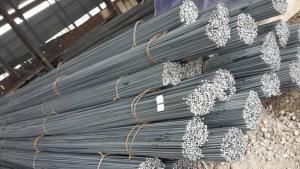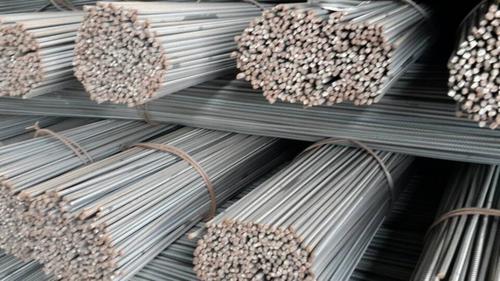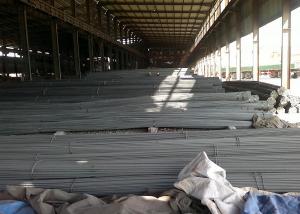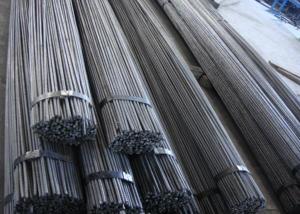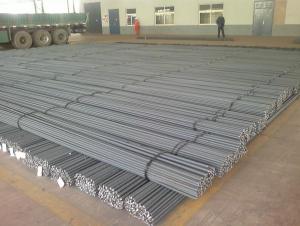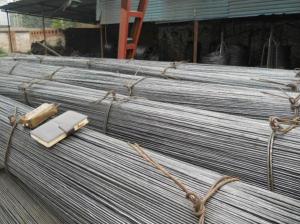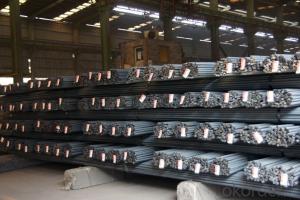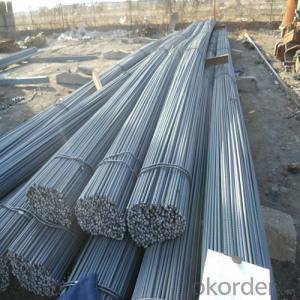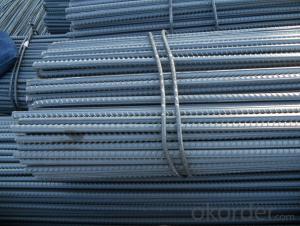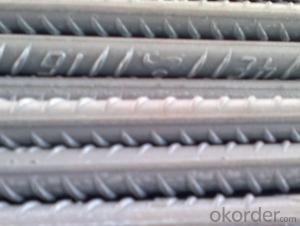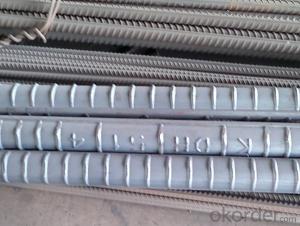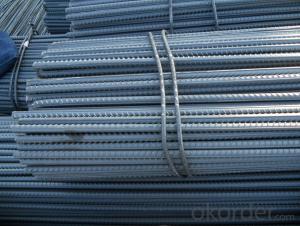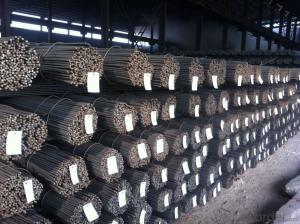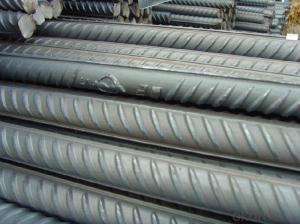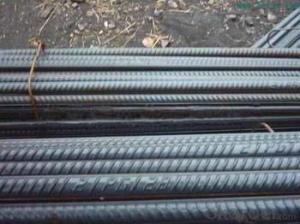HR Steel Deformed Rebar ASTM Standard
- Loading Port:
- China Main Port
- Payment Terms:
- TT or LC
- Min Order Qty:
- -
- Supply Capability:
- -
OKorder Service Pledge
OKorder Financial Service
You Might Also Like
Product Description:
OKorder is offering HR Steel Deformed Rebar ASTM Standard at great prices with worldwide shipping. Our supplier is a world-class manufacturer of steel, with our products utilized the world over. OKorder annually supplies products to African, South American and Asian markets. We provide quotations within 24 hours of receiving an inquiry and guarantee competitive prices.
Product Applications:
HR Steel Deformed Rebar ASTM Standard are ideal for structural applications and are widely used in the construction of buildings and bridges, and the manufacturing, petrochemical, and transportation industries.
Product Advantages:
OKorder's HR Steel Deformed Rebar ASTM Standard are durable, strong, and wide variety of sizes.
Main Product Features:
· Premium quality
· Prompt delivery & seaworthy packing (30 days after receiving deposit)
· Can be recycled and reused
· Mill test certification
· Professional Service
· Competitive pricing
Product Specifications:
Manufacture: Hot rolled
Grade: Gr40
Size: 6mm-32mm
Certificates: ISO, SGS, BV, CIQ
Length: 6m – 12m, as per customer request
Packaging: Export packing, nude packing, bundled
| DEFORMED BAR | |
| SIZE d(mm) | theoretical kg/m |
| 6 | 0.222 |
| 8 | 0.395 |
| 10 | 0.617 |
| 12 | 0.888 |
| 14 | 1.21 |
| 16 | 1.58 |
| 18 | 2 |
| 20 | 2.47 |
| 22 | 2.98 |
| 25 | 3.85 |
| 28 | 4.83 |
| 32 | 6.31 |
FAQ:
Q1: Why buy Materials & Equipment from OKorder.com?
A1: All products offered byOKorder.com are carefully selected from China's most reliable manufacturing enterprises. Through its ISO certifications, OKorder.com adheres to the highest standards and a commitment to supply chain safety and customer satisfaction.
Q2: How do we guarantee the quality of our products?
A2: We have established an advanced quality management system which conducts strict quality tests at every step, from raw materials to the final product. At the same time, we provide extensive follow-up service assurances as required.
Q3: what is the difference between actual weight and theoretical weight?
A3: All the section steel has two weights: actual weight and theoretical weight. Actual weight is the weighing out when the product delivered from the mill. Theoretical weight is calculated by pieces. The invoice can be based on each of them as your request.
Images:

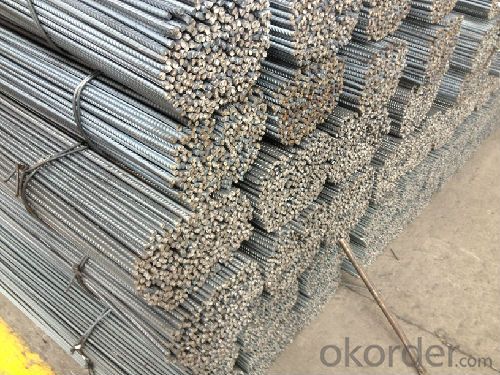
- Q: How are steel rebars stored on site to prevent damage?
- Steel rebars are typically stored on site in a way that prevents damage by keeping them off the ground, away from moisture, and organized to avoid any bending or deformation. This can be achieved by using racks or pallets to elevate the rebars, covering them with tarps or plastic sheets to shield from rain or snow, and arranging them in a neat and orderly manner to minimize any accidental mishandling or impact.
- Q: 8 mm thread steel, how much is a bundle?
- Steel is commonly known as hot rolled ribbed bar, belonging to the small steel steel, mainly used for steel reinforced concrete structure frame. In use, some mechanical strength, bending deformation property and welding performance are required.
- Q: Can steel rebars be used in road construction projects?
- Indeed, road construction projects can utilize steel rebars. Steel rebars are frequently employed as reinforcement in concrete structures, such as roads, contributing to the overall sturdiness and endurance of the road by fortifying the concrete. Typically positioned within the concrete pavement, these rebars furnish tensile strength, effectively preventing cracks or fractures when subjected to heavy loads. Notably, steel rebars possess corrosion-resistant properties, a crucial attribute for road construction projects, given their exposure to moisture and inclement weather. Consequently, incorporating steel rebars into road construction ventures serves to enhance both the road's structural integrity and longevity.
- Q: How do steel rebars affect the overall sustainability of a construction project?
- The overall sustainability of a construction project can be significantly influenced by steel rebars. To begin with, steel rebars are commonly employed to reinforce concrete structures, thereby enhancing their strength and durability. This leads to an increase in the longevity of the building, consequently minimizing the necessity for frequent repairs or replacements. As a result, the consumption of materials and energy required for maintenance over the long term is reduced. Additionally, the utilization of steel rebars contributes to the structural integrity of a construction project, enabling the design of lighter and more efficient structures. This, in turn, leads to a reduction in material usage and lower energy consumption during the construction process. Moreover, the use of steel rebars often allows for the construction of slimmer and more aesthetically pleasing structures, which can positively impact the project's environmental footprint. Moreover, steel rebars are recyclable, further enhancing the sustainability of a construction project. At the end of a building's life cycle, it is easy to recover and reuse steel rebars, thereby reducing the demand for new steel production. This not only conserves natural resources but also significantly reduces greenhouse gas emissions associated with the steel manufacturing process. Furthermore, steel rebars can contribute to the overall sustainability of a construction project by improving the building's resilience to natural disasters such as earthquakes or hurricanes. By providing additional strength and flexibility to the structure, steel rebars can help minimize damage and potentially save lives. In conclusion, the usage of steel rebars positively affects the overall sustainability of a construction project by enhancing the structural integrity and durability of buildings, reducing material and energy consumption, promoting recycling and reuse, and improving resilience to natural disasters. Their utilization is a vital component in the creation of more sustainable and environmentally friendly construction practices.
- Q: What is the lifespan of steel rebars?
- The lifespan of steel rebars can vary depending on various factors such as the quality of the steel used, the environment it is exposed to, and the level of maintenance. However, generally, steel rebars have a lifespan of around 50 to 100 years.
- Q: Can steel rebars be used in historical bridge restoration?
- Yes, steel rebars can be used in historical bridge restoration. In many cases, historical bridges may have deteriorated or suffered damage over time, and steel rebars can provide strength and stability during the restoration process. Steel rebars are commonly used in reinforced concrete structures and can help reinforce the bridge's structural integrity. However, it is important to consider the aesthetics of the historical bridge and ensure that the use of steel rebars does not compromise its historical value or appearance. Preservation guidelines and consultations with historical experts can help determine the appropriate use of steel rebars in historical bridge restoration projects.
- Q: How do steel rebars affect the overall seismic performance of a structure?
- The overall seismic performance of a structure is greatly enhanced by steel rebars. Seismic events, like earthquakes, exert dynamic forces on buildings, causing them to vibrate and possibly collapse. However, incorporating steel rebars in concrete structures significantly enhances their ability to withstand these forces and ensures the safety of those inside. First and foremost, steel rebars strengthen a building's structure. By reinforcing the concrete, they increase its tensile strength since concrete alone is weak in tension. During an earthquake, the rebars help distribute the dynamic forces throughout the structure, preventing stress concentration in specific areas. This redistribution of forces minimizes the risk of localized failures and maintains the stability of the structure. Moreover, steel rebars improve the ductility of a structure. Ductility refers to a material's ability to deform under stress without breaking. During an earthquake, buildings undergo significant lateral movements and deformations. Steel rebars, with their high ductility, can elongate and stretch without fracturing, absorbing and dissipating the seismic energy. This property enables the structure to withstand larger ground motions and reduces the chance of sudden collapse. Furthermore, steel rebars enhance the overall resilience of a structure. Resilience refers to a building's ability to quickly recover its functionality after an earthquake. By reinforcing the concrete, steel rebars contribute to the post-earthquake repairability of the structure. They ensure that the building maintains its load-carrying capacity even after sustaining damage, which reduces downtime and allows for a faster recovery. Additionally, steel rebars serve as a warning sign for potential structural issues. During an earthquake, cracks may appear in the concrete, indicating areas of stress concentration. These cracks are often visible around the rebars, acting as an early indication of structural vulnerability. This visual warning allows for timely inspection and repair, preventing further damage and ensuring the long-term safety of the building. In conclusion, steel rebars play a crucial role in enhancing the overall seismic performance of a structure. Their inclusion in concrete greatly improves structural integrity, increases ductility, enhances resilience, and provides visual warnings of potential issues. By reinforcing the concrete, steel rebars ensure that buildings can withstand seismic forces, reducing the risk of collapse and ensuring the safety of occupants during earthquakes.
- Q: How do steel rebars affect the overall fire safety of a structure?
- The overall fire safety of a structure can be affected both positively and negatively by steel rebars. On the positive side, steel rebars contribute to the strength and stability of the structure, enabling it to withstand the impact of a fire and prevent collapse. This is particularly important for high-rise buildings or structures at risk of fire hazards. Moreover, steel rebars have a high melting point, making them more resistant to heat compared to other building materials. This characteristic slows down the spread of fire and allows for additional time for evacuation or firefighting efforts. However, there are also negative effects of steel rebars on fire safety. Exposed to high temperatures, steel expands, leading to structural deformations and potential failure of the rebars. This compromises the integrity of the structure and increases the risk of collapse. Furthermore, steel rebars conduct heat, transferring it from the fire to other parts of the structure. This localized heating weakens nearby materials and can accelerate the spread of fire within the building. To address these negative effects, fire-resistant coatings or fireproofing materials can be applied to the steel rebars. These coatings insulate and protect the rebars from high temperatures, delaying their failure and reducing the risk of collapse. In conclusion, while steel rebars enhance the overall fire safety of a structure through their strength and stability, they also come with drawbacks. Implementing appropriate fire protection measures, such as fire-resistant coatings, is vital to ensure optimal performance of the rebars during a fire.
- Q: Are steel rebars suitable for use in high-traffic areas like bridges?
- Yes, steel rebars are suitable for use in high-traffic areas like bridges. Steel rebars provide exceptional strength and durability, making them ideal for withstanding heavy loads and frequent use. Additionally, steel rebars offer excellent resistance to corrosion, ensuring the longevity and structural integrity of bridges in high-traffic areas.
- Q: What is the recommended maximum length of cantilevered steel rebars?
- The recommended maximum length of cantilevered steel rebars can vary depending on factors such as the specific application, load requirements, and design standards. It is important to consult structural engineers or relevant building codes to determine the appropriate maximum length for a specific project.
Send your message to us
HR Steel Deformed Rebar ASTM Standard
- Loading Port:
- China Main Port
- Payment Terms:
- TT or LC
- Min Order Qty:
- -
- Supply Capability:
- -
OKorder Service Pledge
OKorder Financial Service
Similar products
Hot products
Hot Searches
Related keywords


